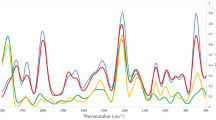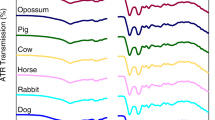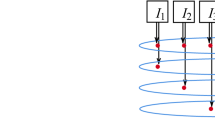Abstract
IT has been frequently stated that the determination of the haptoglobin groups of some subjects may be difficult, even by the Galatius-Jensen1 method for detecting hæmoglobin–haptoglobin complexes with benzidine. Some 2–2 subjects with a low haptoglobin blood concentration may erroneously be considered as ahaptoglobinæmic2. It may also be hazardous to distinguish a subject lacking haptoglobin from one belonging to the 1–1 group, when Smithies's standard technique of starch-gel electrophoresis with borate buffer at pH 8.4 is used3, since with this method the mobility of the hæmoglobin is nearly the same as that of the hæmoglobin–haptoglobin complex of the 1–1 pattern4–6.
This is a preview of subscription content, access via your institution
Access options
Subscribe to this journal
Receive 51 print issues and online access
$199.00 per year
only $3.90 per issue
Buy this article
- Purchase on Springer Link
- Instant access to full article PDF
Prices may be subject to local taxes which are calculated during checkout
Similar content being viewed by others
References
Galatius-Jensen, F., Acta Genet., 8, 232 (1958).
Kirk, R. L., Lai, L. Y. C., Mahmood, S., and Bhagwan, S. R., Nature, 185, 185 (1060).
Smithies, O., Biochem. J., 61, 629 (1955).
Laurell, C. B., Scand. J. Clin. Lab. Invest., 11, 18 (1959).
Moullec, J., Fine, J. M., and Linnard, J., Nature, 187, 517 (1960).
Harris, H., Brit. Med. Bull., 17, 217 (1961).
Wieme, R. J., Clin. Chim. Acta, 4, 317 (1959).
Wieme, R. J., Studies on Agar-Gel Electrophoresis (Brussels, 1959).
Hirschfeld, J., Acta Path. Microbiol. Scand., 47, 169 (1959).
Van Ros, G., van Sande, M., and Druet, R., Ann. Soc. Belge Med. Trop. (to be published).
Nyman, M., Scand. J. Clin. Lab. Invest., 11, Supp. 39 (1959).
Sass, M. D., and Spear, P. W., Nature, 193, 285 (1962).
Moullec, J., and Fine, J. M., Nature, 184, 196 (1959).
Baitsch, H., Meier, G., Schoeller, R. L., and Kahlich-Koenner, D. M., Nature, 186, 976 (1960).
Allison, A. C., Blumberg, B. S., and Rees, M., Nature, 181, 824 (1958).
Smithies, O., and Walker, N. F., Nature, 176, 1265 (1955).
Sutton, H. E., Neel, J. V., Binson, G., and Zuelzer, W. W., Nature, 178, 1287 (1956).
Sonnet, J., and Michaux, J. L., Nature, 188, 504 (1960).
Giblett, E. R., Nature, 183, 192 (1959).
Blumberg, B. S., and Gentile, Z., Nature, 189, 897 (1961).
Author information
Authors and Affiliations
Rights and permissions
About this article
Cite this article
VAN SANDE, M., VAN ROS, G. & DRUET, R. Determination of Haptoglobin-groups Frequencies by Starch-gel and Agar-gel Electrophoresis : Application to Belgian and Barundi Populations. Nature 197, 603–604 (1963). https://doi.org/10.1038/197603a0
Issue Date:
DOI: https://doi.org/10.1038/197603a0
This article is cited by
Comments
By submitting a comment you agree to abide by our Terms and Community Guidelines. If you find something abusive or that does not comply with our terms or guidelines please flag it as inappropriate.



